LAMP App
MindLAMP is a clinical mobile and web app developed by Dr. John Torous, MD and the Digital Psychology team at Beth Israel Deaconess Hospital. It is used by study patients to better understand and improve brain health.
MindLAMP is a clinical mobile and web app developed by Dr. John Torous, MD and the Digital Psychology team at Beth Israel Deaconess Hospital. It is used by study patients to better understand and improve brain health.
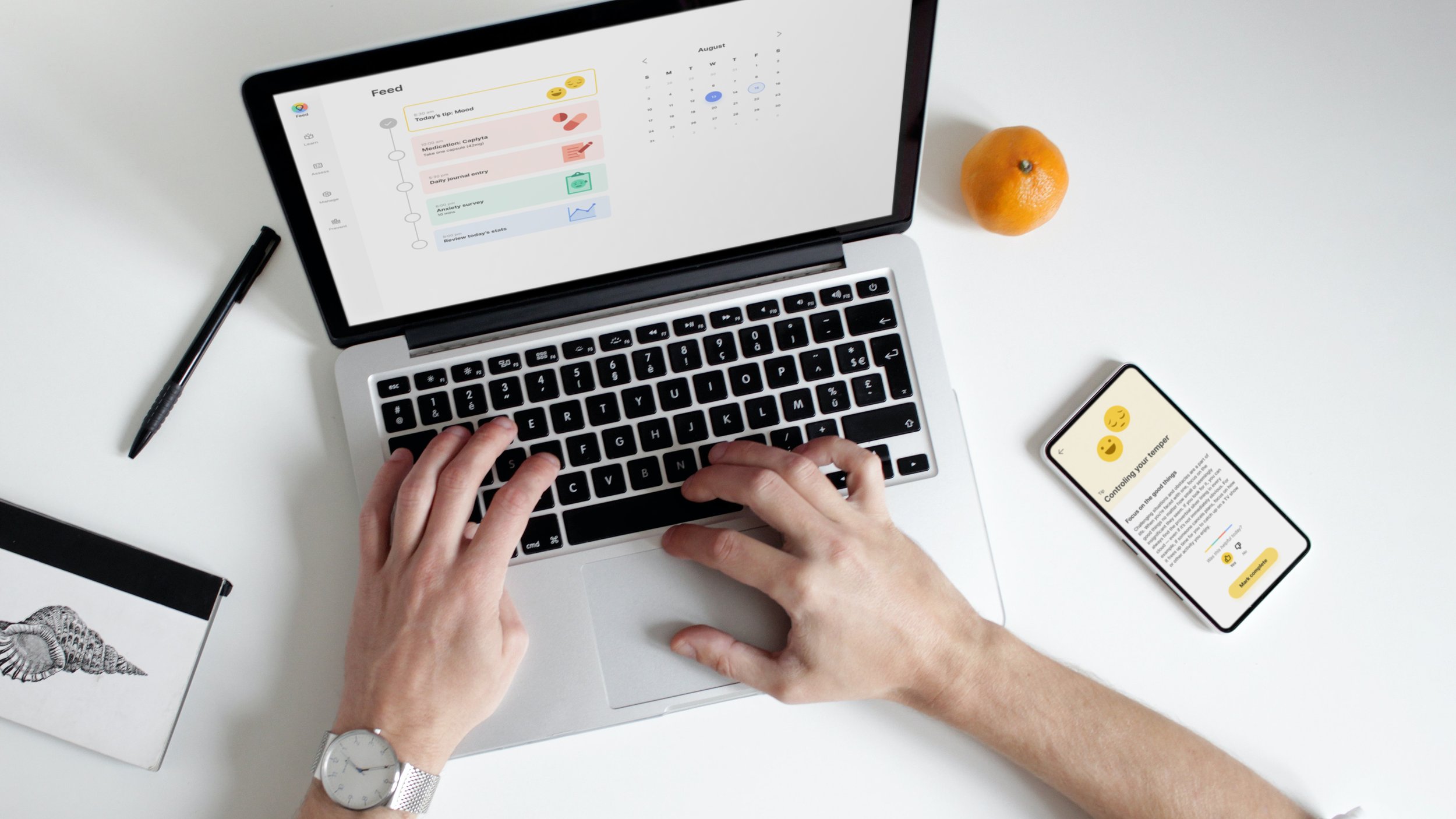
The app consists of 4 main sections: Learn, Assess, Manage, and Prevent (LAMP), and a feed that encompasses elements of each category for daily treatment.
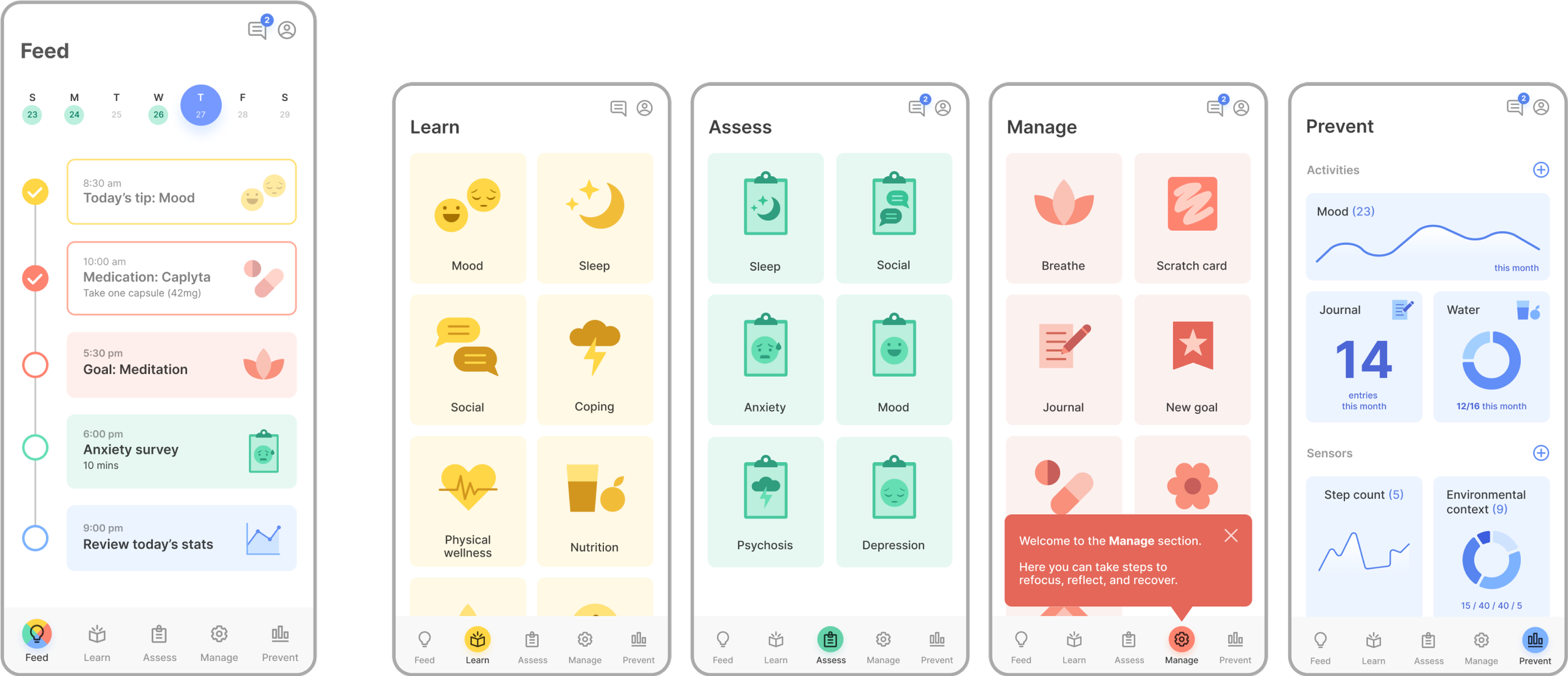
Learn is a resources section, equipping patients with knowledge to help improve wellbeing and gain tools to better manage life events. Organization of content is a simple category and menu structure.

Assess is a data-collection section, mostly comprised of surveys to help assess patients’ behavioral patterns and wellbeing. Assessments may be initiated as a part of the daily feed, or accessed directly from this section at the prompting of a clinician.
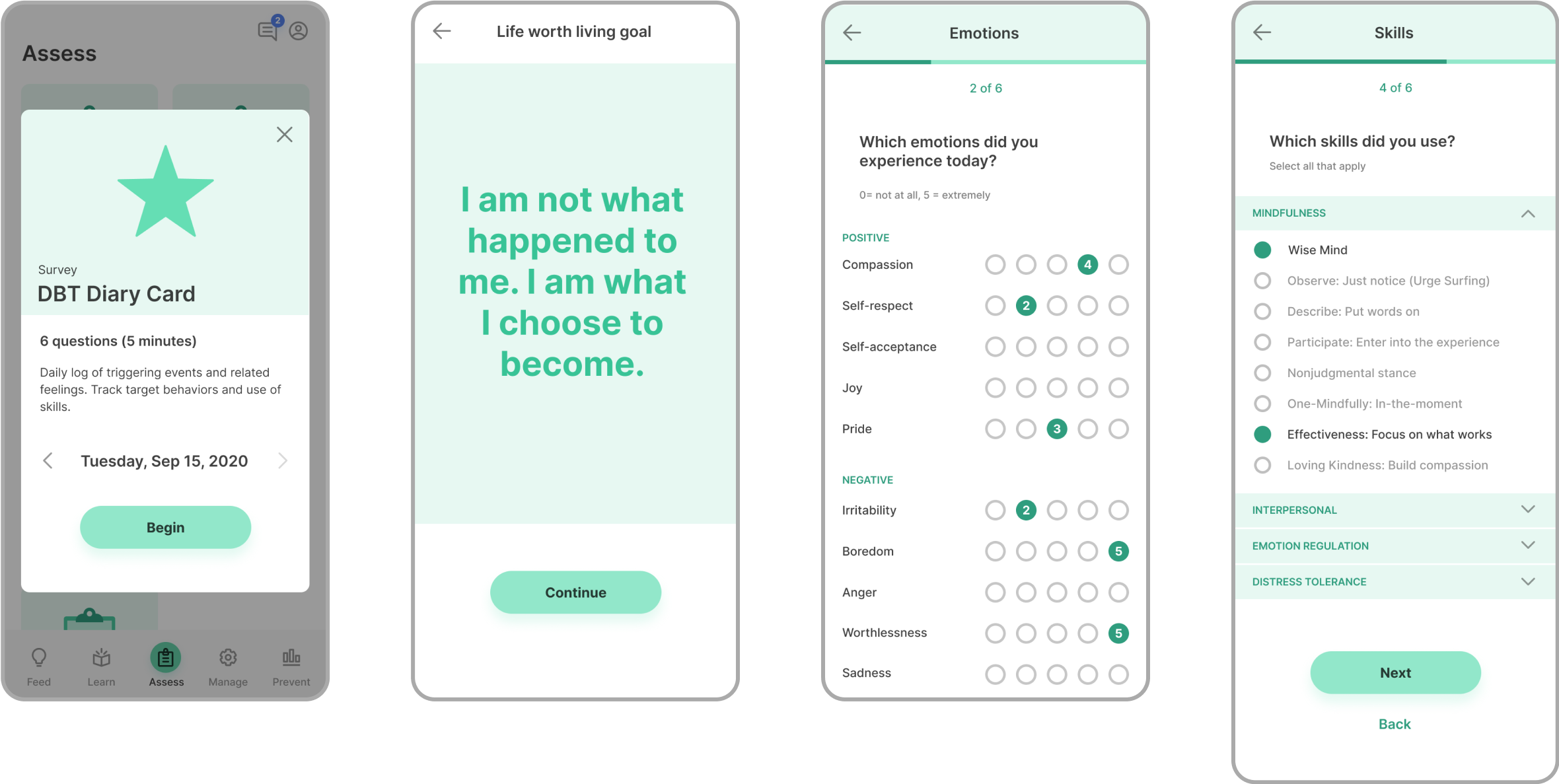
Dialectical Behavior Therapy (DBT) is a type of cognitive behavioral therapy that helps patients cope with stress, regulate emotions, and improve relationships. The DBT assessment asks patients to regularly review their use of the tools.
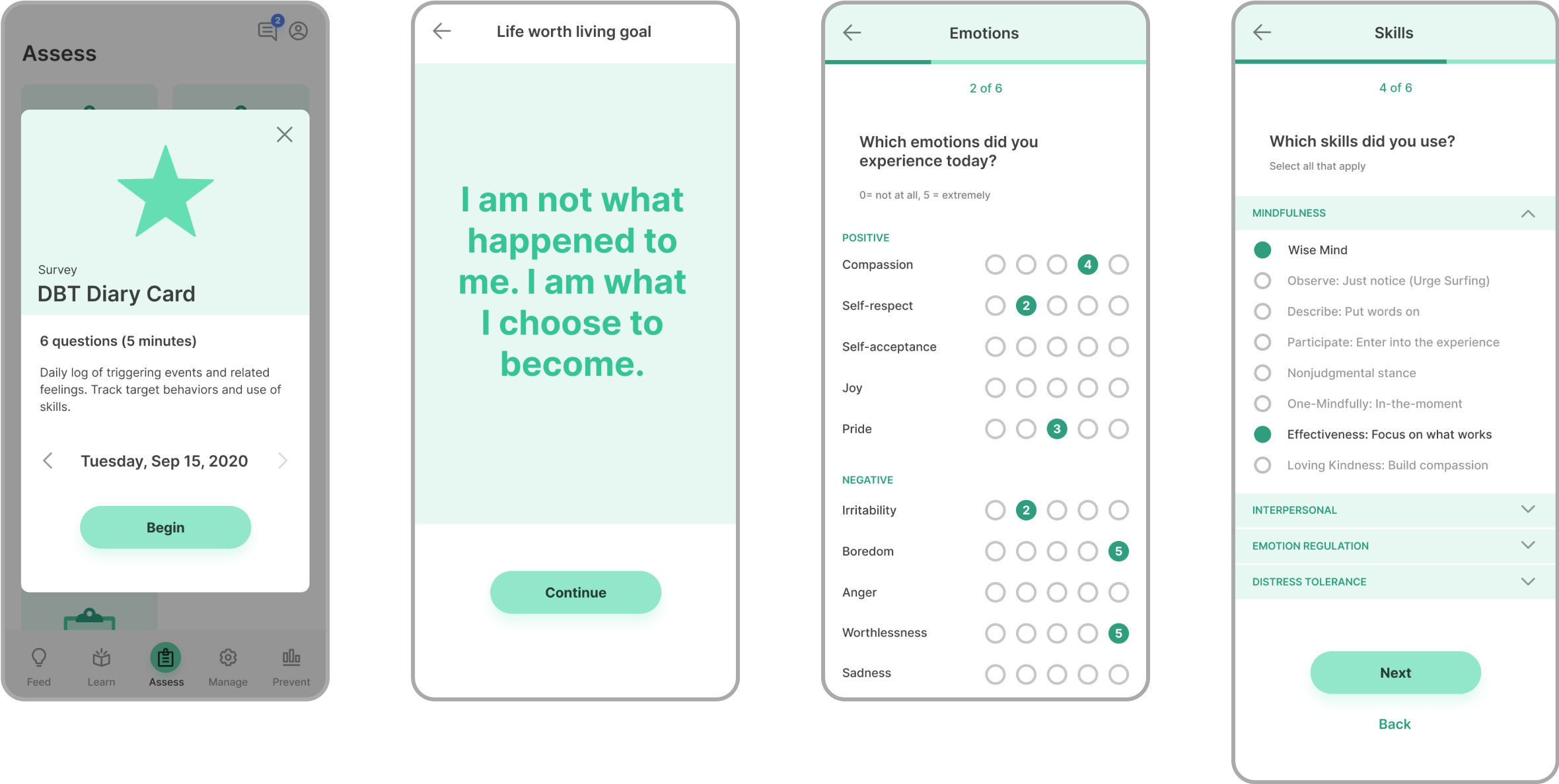
Manage is a collection of brain games and tools, which serve as effective mental health management tool for patients. Performance is assessed over time.
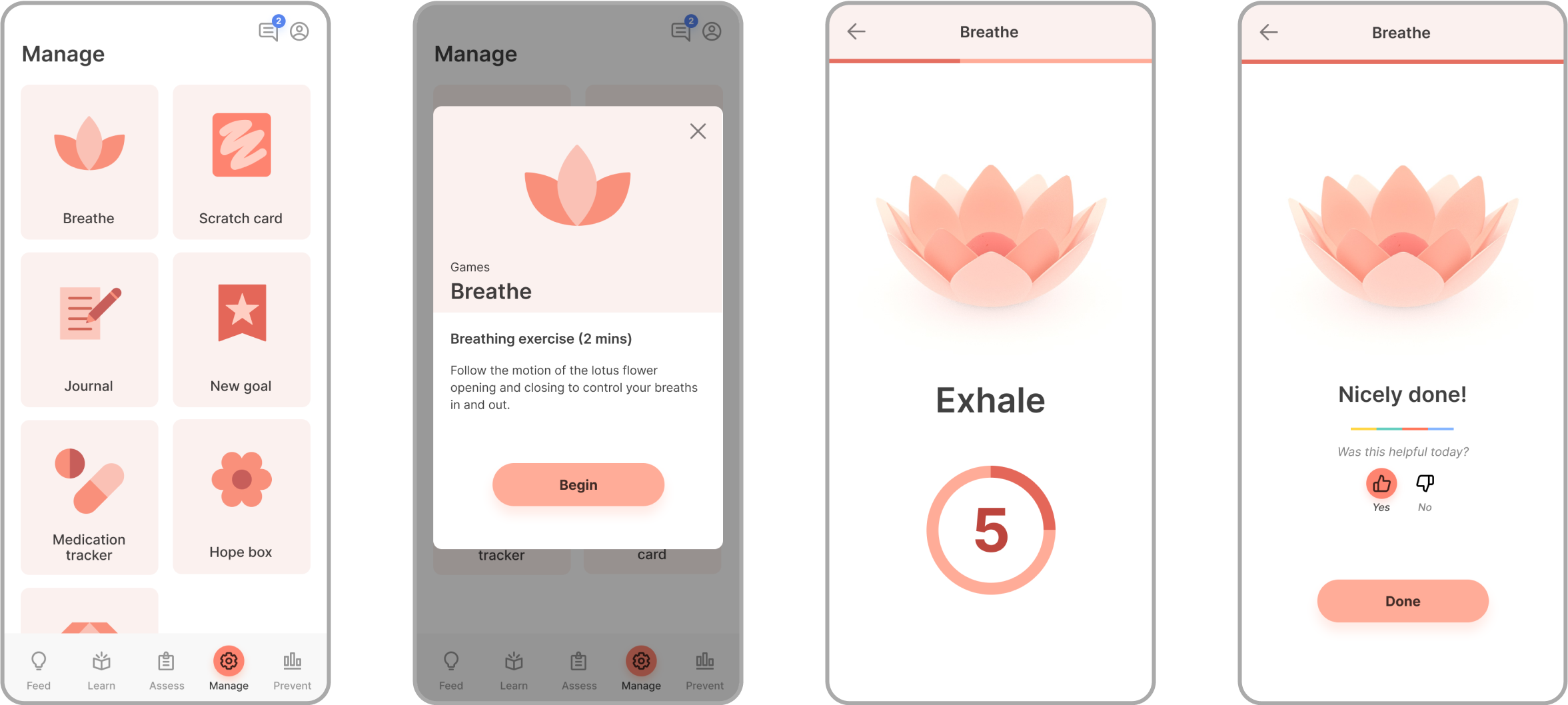
Experiences in the manage section are designed to help stimulate introspection or bring calm to patients. Some examples are journaling, positive reminders (saving inspirational quotes and phrases), goal setting and tracking, breathing exercises, and skills development.
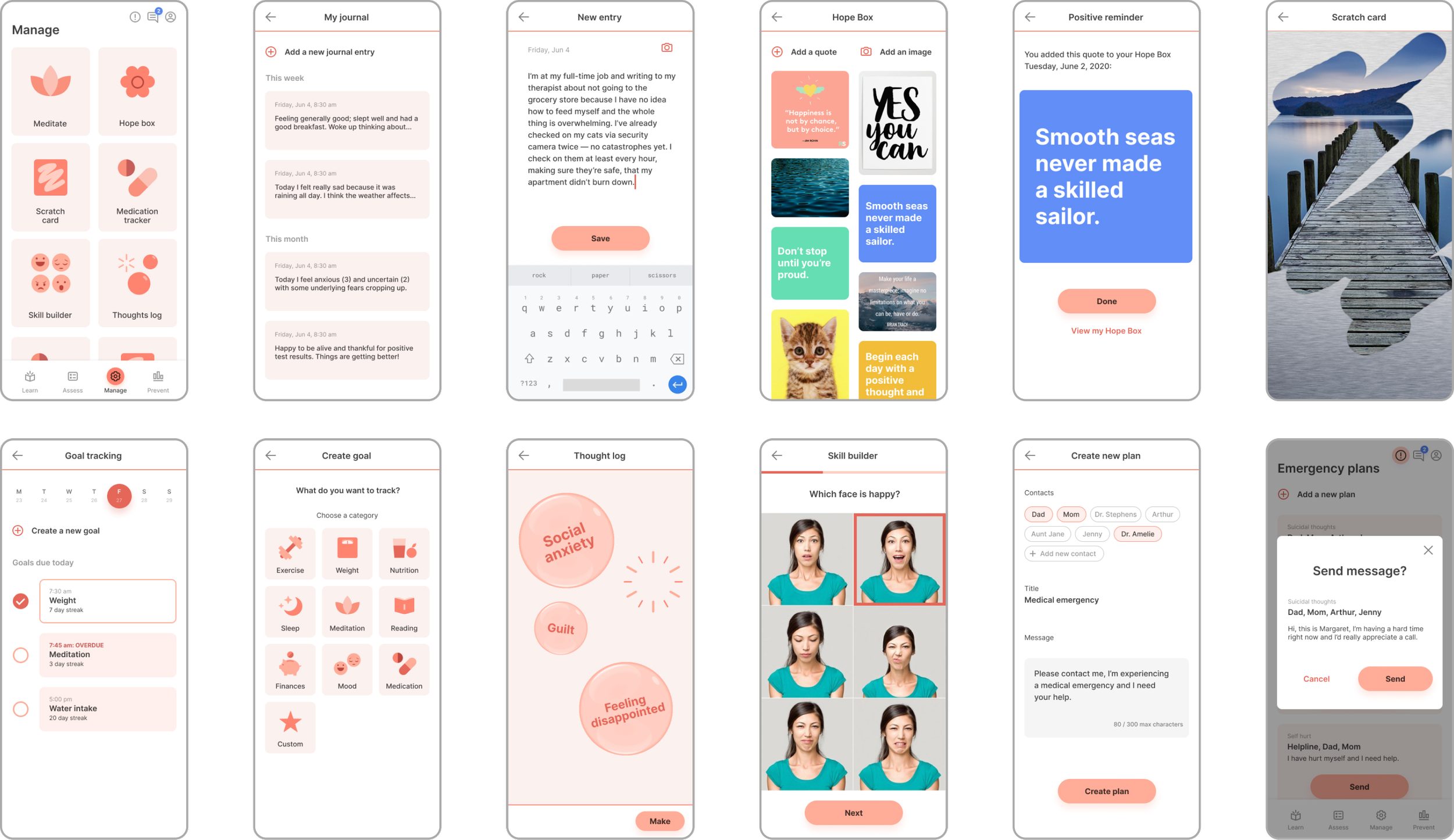
Prevent is an insights section. Data from surveys, brain games, sensors and other activities are translated into meaningful reports to assess progress over time.

The theme for the app is ‘positive progress’, so I created bright, primary coloursets for each category, with 7 shades of each color. Icons and illustrations are simple and lively, and designed using a value scale so SVG assets can change colours programmatically.
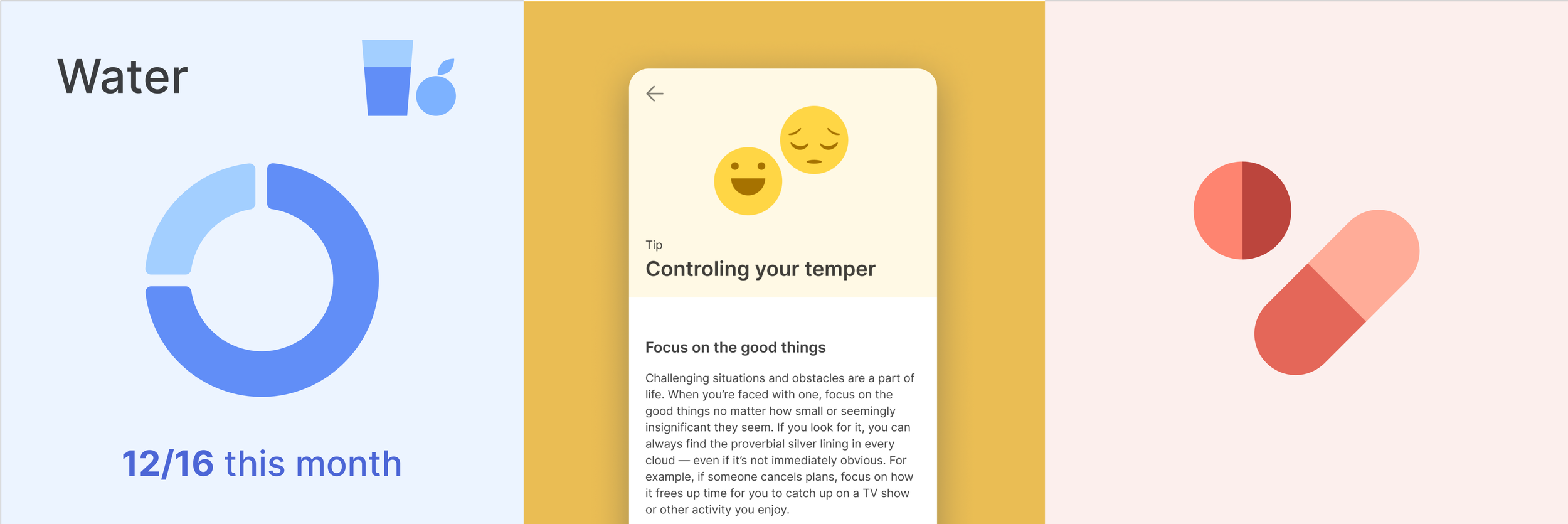
I also created a small set of UI glyphs for use in the app and web experience: